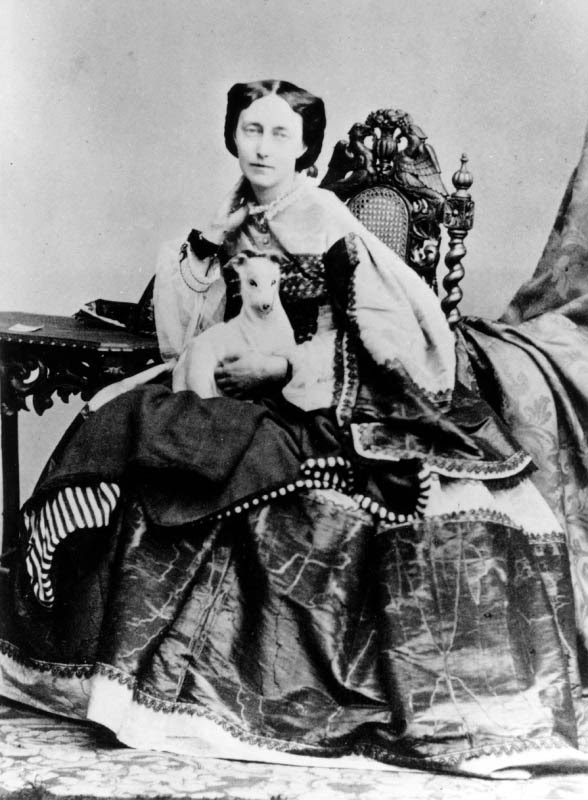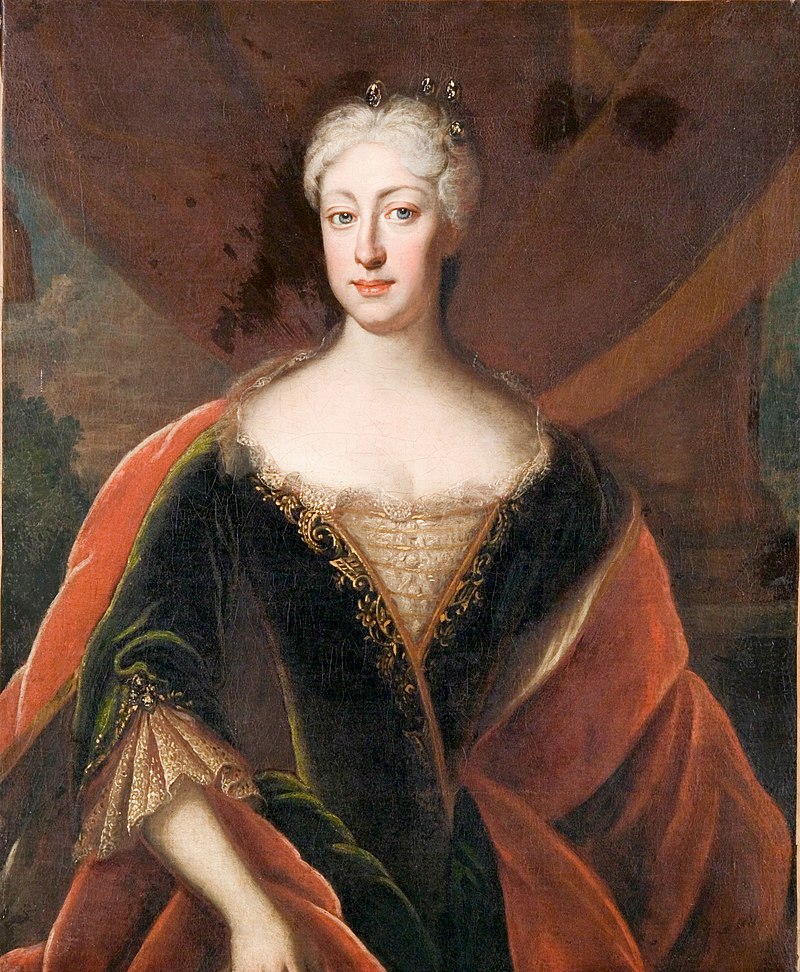© Unofficial Royalty 2023

King François I of France; Credit – Wikipedia
September 12, 1368 – Death of Blanche of Lancaster, Duchess of Lancaster, from the plague, first wife of John of Gaunt, mother of King Henry IV of England, at Bolingbroke Castle in Lindsey, England; buried at Old St Paul’s Cathedral in London, England
The Duchy of Lancaster is one of the two royal duchies in England and is held in trust for the Sovereign to provide income for the use of the British monarch. So how did the Duchy of Lancaster get into the hands of the British Sovereign? The connection is Blanche of Lancaster, the first wife of John of Gaunt, son of King Edward III. Blanche’s father was Henry of Grosmont, 1st Duke of Lancaster, a great-grandson of King Henry III. Henry of Grosmont, 1st Duke of Lancaster died of the plague in 1361. Since Blanche’s father did not have any sons, Blanche and her sister Maud became his co-heiresses. Maud’s portion of her inheritance passed to Blanche and her husband upon her death. Blanche died at age 23, possibly of the plague, on September 12, 1368. When John of Gaunt died in 1399, his nephew King Richard II confiscated the holdings of the Duchy of Lancaster and banished John of Gaunt’s son Henry Bolingbroke for life. Henry returned to England to claim his inheritance. Supported by leading families, Henry regained control of the Lancastrian strongholds and captured Richard II. Richard abdicated and was imprisoned in Pontefract Castle where he later died. Henry Bolingbroke was crowned King Henry IV in 1399. The first act of King Henry IV was to declare that the Duchy of Lancaster would be held separately from the other possessions of the Crown, and should descend to his male heirs. This separation was confirmed in 1461 by King Edward IV when he stipulated that the Duchy would be held separate from other inheritances by him and his heirs, the Kings of England. Ever since, the Duchy of Lancaster has effectively passed to each reigning monarch.
Unofficial Royalty: Blanche of Lancaster, Duchess of Lancaster
September 12, 1494 – Birth of King François I of France at the Château de Cognac in Cognac, France
A contemporary of Charles V, Holy Roman Emperor and King Henry VIII of England, François succeeded his first cousin once removed and father-in-law King Louis XII of France, who died without a son. The magnificent art collection of the French kings began during his reign. It can still be seen at the Musée du Louvre, which occupies most of the former Louvre Palace. François focused on both new construction and renovations. Among his projects was the renovation of the Louvre Palace from a medieval fortress into a Renaissance palace and the building of a new City Hall (the Hôtel de Ville) for Paris. In 1524, François financed the expedition of Giovanni da Verrazzano to North America. On this expedition, Verrazzano was the first documented European to visit the present site of New York City (where the Verrazzano Narrows Bridge is named after him) and claimed Newfoundland in present-day Canada for the French crown. In 1534, François sent Jacques Cartier to explore the St. Lawrence River in the present-day Canadian province of Quebec.
Unofficial Royalty: King François I of France
September 12, 1683 – Death of King Afonso VI of Portugal at Royal Palace of Sintra in Sintra, Portugal; buried at Monastery of São Vicente de Fora in Lisbon, Portugal
13-year-old Afonso succeeded his father João IV, King of Portugal died in 1656. Afonso’s sister Catherine of Braganza was the wife of King Charles II of England. Afonso was debilitated mentally and physically due to the effects of a disease he contracted in childhood, controlled by a favorite early in his reign, relieved of his sovereign power by his brother who married his wife after their marriage was annulled, and confined under guard for the last fifteen years of his life,
Unofficial Royalty: King Afonso VI of Portugal
September 12, 1804 – Birth of Karl, 3rd Prince of Leiningen in Amorbach, Principality of Leiningen, now in Bavaria, Germany
Full name: Karl Friedrich Wilhelm Emich
Karl was the half-brother of Queen Victoria. At the age of ten, Karl became Prince of Leiningen upon his father’s death in 1814. However, in 1806, the Principality of Leiningen had been mediatized – annexed to another state(s), while allowing certain rights to its former sovereign. The Principality of Leiningen ceased to exist and was divided between the Grand Duchy of Baden, the Kingdom of Bavaria, and the Grand Duchy of Hesse. The family retained Amorbach Abbey in Amorbach, which remains the family seat of the Princes of Leiningen.
Unofficial Royalty: Karl, 3rd Prince of Leiningen
September 12, 1837 – Birth of Ludwig IV, Grand Duke of Hesse and by Rhine, husband of Princess Alice of the United Kingdom, in Darmstadt, Grand Duchy of Hesse and by Rhine, now in Hesse, Germany
Full name: Friedrich Wilhelm Ludwig Karl
On July 1, 1862, Ludwig married Princess Alice of the United Kingdon at Osborne House on the Isle of Wight, England. The wedding was a rather subdued affair, as Alice’s father had died seven months earlier, and the family was still in official mourning. At the time of the wedding, Queen Victoria issued Letters Patent giving Ludwig the style Royal Highness. This would only be valid in the United Kingdom. Elsewhere, he was still a Grand Ducal Highness. In 1877, Ludwig succeeded his childless uncle as Grand Duke of Hesse and by Rhine. The following year, the family, with the exception of Alice and their daughter Ella, all came down with diphtheria. Princess Alice nursed her family back to health, and all survived except for their youngest daughter May. Sadly, Princess Alice eventually also became ill and was unable to fight off the illness, and died on December 14, 1878. The couple’s eldest daughter, Victoria, took on the role of raising her younger siblings and often served as hostess at official events.
Unofficial Royalty: Ludwig IV, Grand Duke of Hesse and by Rhine
September 12, 1917 – Death of Tsaritsa Eleonore of Bulgaria at Euxinograd Palace, near Varna, Bulgaria; born Eleonore of Reuss-Köstritz, second wife of Tsar Ferdinand of Bulgaria, buried in the cemetery at Boyana Church near Sofia, Bulgaria
Following a bit of match-making by Grand Duchess Maria Pavlovna of Russia, Eleonore became engaged to Ferdinand of Bulgaria (born Prince Ferdinand of Saxe-Coburg-Gotha-Koháry) in December 1907. Ferdinand’s first wife, Princess Maria Luisa of Bourbon-Parma, had died in 1899, after the birth of the youngest of their four children. Eleonore and Ferdinand did not have any children however, Eleonore was instrumental in raising her four stepchildren. During the Balkan Wars and World War I, Eleonore worked tirelessly as a nurse on the front lines. After a serious illness, she died at the age of 57, and as per her wishes, she was buried in a very modest grave next to the medieval Boyana Church which she had helped save.
Unofficial Royalty: Eleonore of Reuss-Köstritz, Tsaritsa of Bulgaria
September 12, 1938 – Death of Prince Arthur of Connaught, son of Prince Arthur, Duke of Connaught and grandson of Queen Victoria, at 41 Belgrave Square in London, England; buried at the Royal Burial Ground, Frogmore in Windsor, England
Like his father, Arthur had a military career. He was on active duty during the Second Boer War. During World War I, Prince Arthur served as aide-de-camp to General Sir John French and General Sir Douglas Haig. He was Governor-General of South Africa from 1920 – 1923. Prince Arthur married his first cousin once removed Princess Alexandra, Duchess of Fife, the elder daughter of Princess Louise, Princess Royal and Alexander Duff, 1st Duke of Fife and a grandchild of King Edward VII of the United Kingdom. The couple had two daughters. In 1938, Prince Arthur died of stomach cancer at the age of 55. As Prince Arthur predeceased his father The Duke of Connaught, Arthur’s son Alastair became heir to the dukedom.
Unofficial Royalty: Prince Arthur of Connaught
This article is the intellectual property of Unofficial Royalty and is NOT TO BE COPIED, EDITED, OR POSTED IN ANY FORM ON ANOTHER WEBSITE under any circumstances. It is permissible to use a link that directs to Unofficial Royalty.














